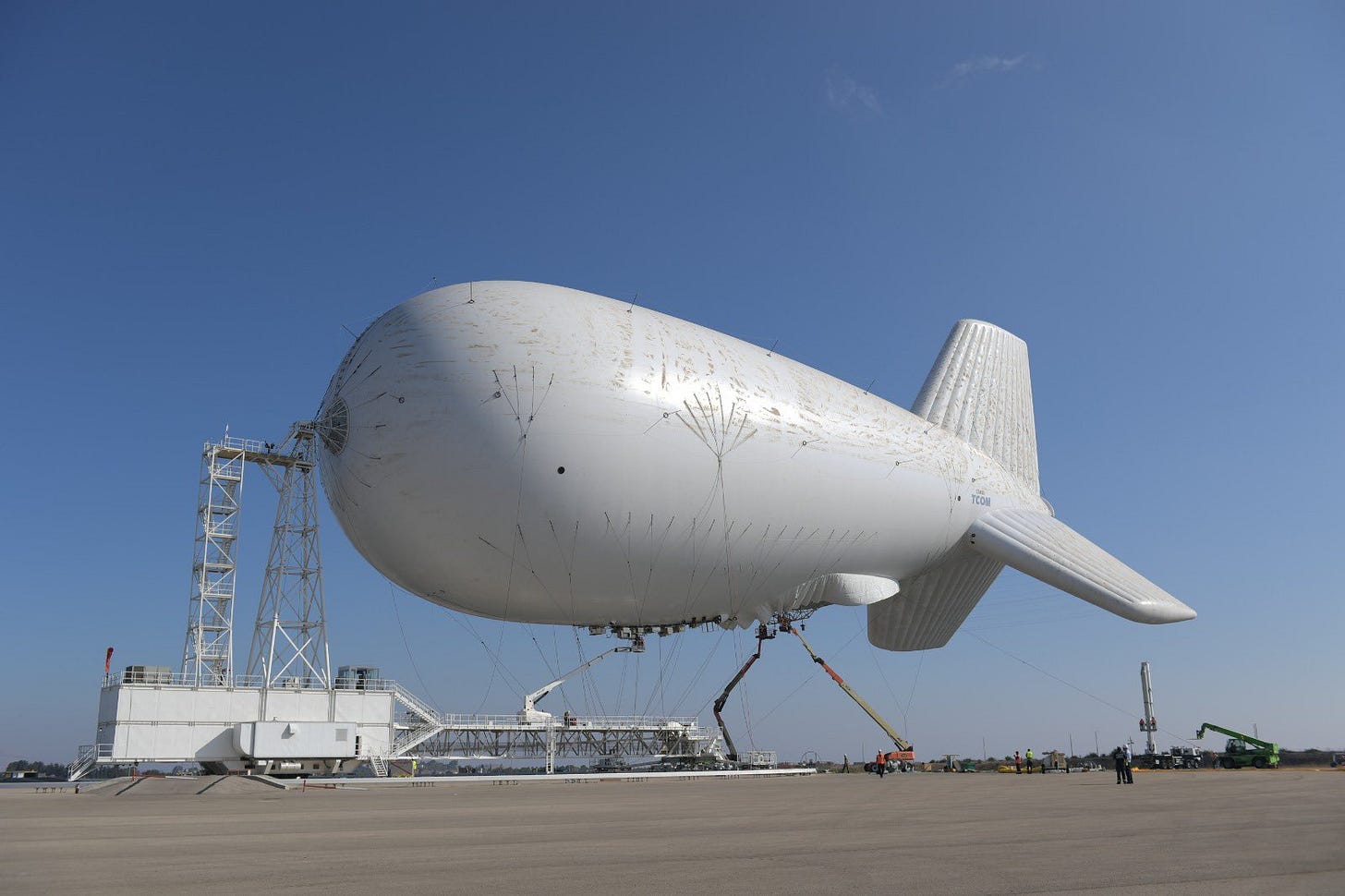1. Hezbollah
For the last couple weeks Hezbollah has stepped up operations in northern Israel. Last night we had a new development: Hezbollah claims to have hit an Iron Dome launcher.
If true, this is a big deal.
For starters: It might not be true. Hezbollah released video. The IDF’s response is a vague non-denial claiming to be unaware of an Iron Dome system being destroyed. Also: It could be half-true. It’s possible that Hezbollah struck the Iron Dome system in some way but did not destroy it.
We’ll see.
But Israel only has ten Iron Dome launchers, so if this was a successful attack then it would mean that Israel’s missile defense capability has been meaningfully degraded.
Worse: It would represent a new level of sophistication for Hezbollah.
Worst: Hezbollah may be preparing for a full-scale shooting war with Israel.
Let’s start with what the Iron Dome actually is. Here’s Air and Space Forces magazine with a primer:
Iron Dome is the umbrella name for two subsystems, the dual-mission counter rocket, artillery, and mortar (C-RAM) and very short-range air defense (V-SHORAD) system. . . .
First, it recognizes incoming short-range fire (up to roughly 45 miles away) using its multimission radar.
Next, using its mobile battle management and control unit, it determines whether the round is headed toward a populated area—say, an outdoor restaurant or a gathering of soldiers.
If the system determines that an intercept is necessary, it fires one of its Tamir missiles (there are 20 per battery) from a mobile unit.
Critically, it can discriminate between rounds that don’t pose a real danger from those that do—and concentrate its fire accordingly.
The principal drawback of Iron Dome is its cost. The Katyusha rockets favored by Hamas and Hezbollah typically cost about $300 a round, while the Iron Dome’s Tamir missiles cost anywhere from $20,000 to $100,000 each, depending on whose numbers are being quoted.
Iron Dome is an impressive system and it has proved to be exceptionally resistant to rocket attack.
But Hezbollah has been experimenting aggressively with the use of UAVs in recent months. Three weeks ago, Hezbollah used drones to probe deep into Israel and cripple the Sky Dew—a massive tethered blimp that Israel uses for long-range surveillance.
If Hezbollah has found a way to strike Iron Dome launchers, then Israel will have to adapt. Quickly.
Hezbollah has been probing Israel since October 8, 2023. The day after the 10/7 Hamas attack, Hezbollah began scattered attacks in northern Israel, launched from Lebanon, Syria, and Iraq.
Those attacks slowed after President Biden quickly dispatched two aircraft carriers to the region (the Gerald R. Ford the Dwight D. Eisenhower). But Biden eventually moved the Eisenhower to the Red Sea and in January he recalled the Ford.
Coincidentally—and probably somewhat consequently—Hezbollah has stepped up attacks.
The Eisenhower is now back in the eastern Mediterranean and maybe it can help bring Hezbollah to heel. But it is older and less-capable than the Ford. And the situation has already escalated.
Not keeping two carriers in the region, with one parked right next to Hezbollah’s front porch, was a mistake by the Biden administration. Some 70,000 Israelis have had to evacuate from the north because of Hezbollah’s attacks. This isn’t sustainable.
It’s getting tense. Last week Israel killed an Iranian bigwig in a strike. Iran’s Revolutionary Guards are promising revenge. Israeli leaders are said to be deciding on whether or not to mount a sustained campaign against Hezbollah in order to stop the constant attacks.
What might this look like? Here’s the Jerusalem Post:
"In the event that an all-out war breaks out, the Israeli front will absorb a volume of fire it has not ever been seen - including what was seen in 2006," [researcher Tal] Beeri predicts.
"Hezbollah's main firepower is missiles and rockets. In fact, Hezbollah's firepower can target the entire territory of the State of Israel with accurate shooting capability. The area that will mainly be under the large volume of fire is the entire northern area up to Haifa. In this area, the bulk of the fire will be from rockets of various types that are considered short-range. Thus, in the first week or two of the war, it will be almost impossible to lead a normal life," he predicted.
According to the research institute's estimates, Hezbollah has 150,000 mortars, 65,000 rockets with a range of up to 80 km, 5,000 rockets and missiles with a range of 80-200 km, 5,000 missiles with a range of 200 km or more, 2,500 unmanned aerial vehicles (UAVs) - and hundreds of advanced missiles, such as anti-aircraft missiles or cruise missiles. Estimates indicate that should war break out, Hezbollah will send several thousand drones and missiles to Israel every day.
Which is why the truth about the Iron Dome incident from last night is so important.
2. Party of Putin
This is a very real thing: A Republican senator defending Vladimir Putin against American aggression.
Those of us who grew up in the Cold War are having the craziest case of whiplash, ever.
There is currently a debate going on in some Never Trump circles about whether or not it’s okay to simply abstain from voting.1 A pox on both their houses.
The position of the double-haters seems to be close to this:
It’s true that Donald Trump is wholly unfit for office, but Democrats are also an existential threat to yadda yadda yadda.
This view is mistaken on two important grounds.





